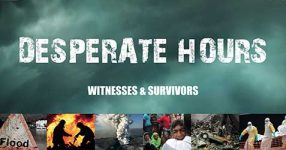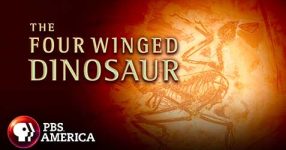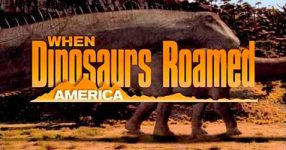The documentary “Catastrophe: Asteroid Strike” explores the tumultuous history of Earth, emphasizing the significant role catastrophic events played in shaping life on the planet. The narrative challenges the conventional view of evolution as a gradual and orderly process, presenting a perspective that sees evolution as a violent and chance-driven phenomenon.
A Clock of Catastrophes: Earth’s Violent History
To provide context, the documentary uses a metaphorical clock where each minute represents three million years of Earth’s history. Midnight marks the planet’s formation, and subsequent catastrophic events are mapped at specific times. At 11:38 p.m., a catastrophic cosmic impact occurred, leading to the extinction of 70% of all life, including the dinosaurs, 65 million years ago.
Exploring the Impact Zone: Red Deer River Valley and Cretaceous-Tertiary Boundary
The documentary takes viewers to the Red Deer River Valley in the Canadian Badlands, where paleontologist Phil Curry investigates the aftermath of the asteroid impact. The layers of rock in the valley represent millions of years of dinosaurian history, culminating in the crucial Cretaceous-Tertiary (KT) boundary. This layer, dating 65 million years ago, serves as a key indicator of the mass extinction event, as below it, dinosaurs thrived, while above it, evidence of dinosaurs disappears.
The Smoking Gun: Iridium and the Global Search for Clues
The documentary shifts its focus to Zumaya Beach in northern Spain, where biologist Yan Schmidt discovered a layer rich in iridium, a rare metal associated with extraterrestrial material. This revelation led scientists to believe that a massive asteroid impact coincided with the extinction of dinosaurs. The global search for the impact crater relied on measuring the worldwide spread of iridium, pointing towards a colossal impact around 125 miles in diameter.
Unveiling the Crime Scene: Chicxulub Crater and Global Impact
The narrative unveils the detective work behind the discovery of the impact site, revealing the Chicxulub Crater buried beneath the Yucatan Peninsula. Scientists pieced together evidence, including cenotes (sinkholes) forming a semicircular ring, to pinpoint the impact location. The immense impact released energy equivalent to one to ten megatons, creating a crater around 200 kilometers in diameter.
Recreating Doomsday: Earth on Fire and the Aftermath
The documentary delves into the aftermath of the impact, exploring the immense heat and trauma that incinerated life within a thousand-mile radius. Scientists recreate the impact using supercomputers, revealing the formation of shock quartz and the ejection of 70 billion tons of soot into the atmosphere, causing a global inferno. The ensuing global cooling and warming cycles, coupled with the release of greenhouse gases, had profound and lasting effects on Earth’s climate.
Survival of the Unlikely Heirs: Mammals Rise to Prominence
The film concludes by highlighting the survival of small mammals above the KT boundary, revealing their unique qualities that allowed them to endure the catastrophic aftermath. The extinction of the dinosaurs served as a crucible for the evolution of mammals, leading ultimately to the emergence of humans.
“Catastrophe: Asteroid Strike” skillfully weaves together scientific evidence and visual storytelling to unravel the story of Earth’s violent past and the cataclysmic asteroid impact that reshaped the course of evolution.












